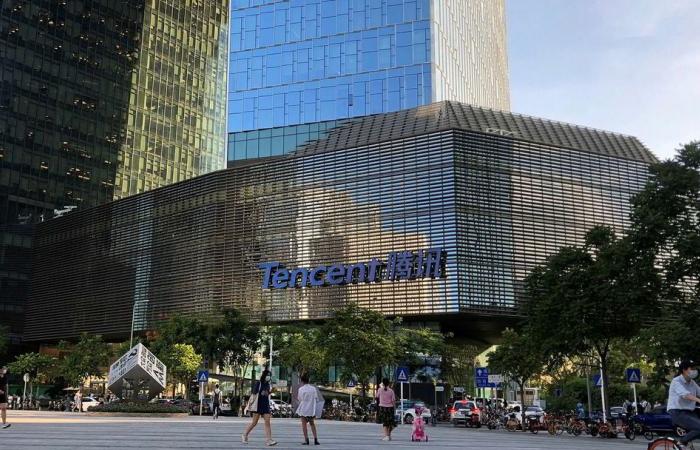In the late 1970s, Shenzhen was barely on the map for southern China. The communist leadership was ready to attempt some market reforms and the former fishing village north of Hong Kong was chosen. Now the start of new reforms is underway.
Over 20 percent growth in 40 years
In Shenzhen, entrepreneurs have been allowed to frolic with freedoms and ideas that have not been available in other parts of China. The first private land sales took place in Shenzhen in 1987 before expanding to the rest of China.
Value creation was $ 400 billion (2,690 billion yuan) in 2019 – 12 percent higher than Hong Kong. This is the third largest value creation in China, behind Shanghai and Beijing. For the last 40 years, the average growth has been 20.7 per cent annually.
According to the South China Morning Post, Chinese President Xi Jinping is now presenting a new plan for Shenzhen. This will give Shenzhen greater freedoms and make the city a center of the region, which also includes Hong Kong.
The article continues below the ad
“Everything will be done to make Shenzhen a global leader in technology and finance, and a showcase for President Xi’s visions of the Chinese ideal society,” wrote the Hong Kong newspaper, which has received a copy of the Communist leadership’s plans for Shenzhen.
Excited
Xi intends that Shenzhen, which has about 13 million inhabitants, will continue to be a laboratory for testing a policy that the government wants to implement for the whole country, but which is too risky, according to the newspaper.
Among other things, it will be opened up to commercialize breakthroughs in research at universities and companies with private capital – similar to what is common in Silicon Valley.
A “data exchange” will also be established where information and research on everything from economics and artificial intelligence can be traded.
– These are comprehensive reforms that aim to lift the city to become a center for the Greater Bay region. The market likes what they hear and is excited, says chief strategist Hao Hong at Bocom International to Bloomberg.
The goal is to compete with Wall Street and Silicon Valley in the United States.
Global center
The Greater Bay region consists of nine mainland Chinese cities, including Shenzhen and Guangzhou, as well as the partially autonomous cities of Hong Kong and Macau. The region has a population of 52 million people.
Hong Kong has had large demonstrations in recent years and China has become more and more involved in the city’s affairs.
The American financial institution Citi writes that Shenzhen’s competitiveness will be strengthened – at the expense of the neighboring city of Hong Kong, which is one of the world’s largest financial centers.
“These measures will encourage technology innovation, attract domestic and foreign talent and accelerate economic liberalization. It will help not only make Shenzhen a global technology center, but also an international financial center – at the same time as there is a risk of a disconnect between the United States and China, “the Citi analysts write in a new report.
The Chinese central bank is testing a digital currency in Shenzhen. Residents have participated in a lottery where free money was distributed that can be used in 3,000 outlets in the Luohu district. The goal is to test the technology before the rest of China can adopt it.
– Once every century
Some of China’s largest and most influential companies come from Shenzhen. The technology company Huawei was established in the 1980s and in recent years has been seen as a threat by competitors and western countries. Tencent is one of the two dominant internet companies in China.
BYD started as a battery manufacturer, but has become best known for its investment in electric cars. The American investment company Berkshire Hathaway, which is led by billionaire Warren Buffett, bought ten percent of the company in 2008. The share price has almost tripled in one year.
Almost all taxis and buses in Shenzhen are electric.
– Shenzhen has an excessively symbolic meaning for the Chinese leadership, which wants to be technologically self-sufficient. The city is important for Xi’s vision that private companies should support the authorities’ strategic goals, says Asia head of the analysis company Eurasia Group, Michael Hirson, to Nihon Keizai Shimbun.
The trade war with the United States, a series of sanctions against Chinese technology companies and the ongoing corona pandemic have put pressure on the communist leadership to continue its reform efforts.
– We are currently experiencing changes that happen once every century. We need to adapt so that we are more self-sufficient in innovation and development, Xi said during a corporate visit to Guangdong earlier this week, according to the Xinhua State News Agency.(Terms)Copyright Dagens Næringsliv AS and / or our suppliers. We would like you to share our cases using a link, which leads directly to our pages. Copying or other form of use of all or part of the content, can only take place with written permission or as permitted by law. For further terms see here.
These were the details of the news China expands experiment to compete with Silicon Valley and Wall Street for this day. We hope that we have succeeded by giving you the full details and information. To follow all our news, you can subscribe to the alerts system or to one of our different systems to provide you with all that is new.
It is also worth noting that the original news has been published and is available at time24.news and the editorial team at AlKhaleej Today has confirmed it and it has been modified, and it may have been completely transferred or quoted from it and you can read and follow this news from its main source.

